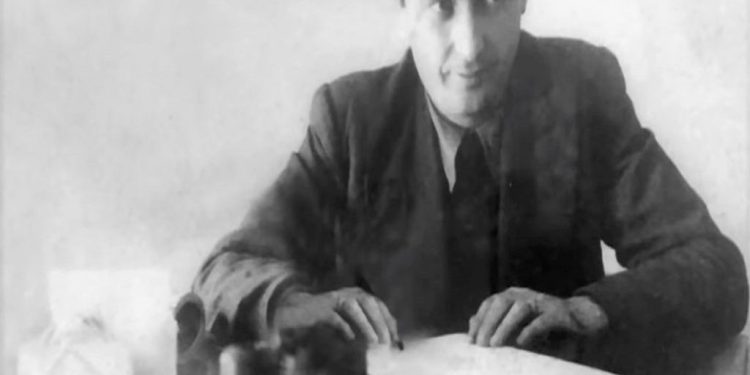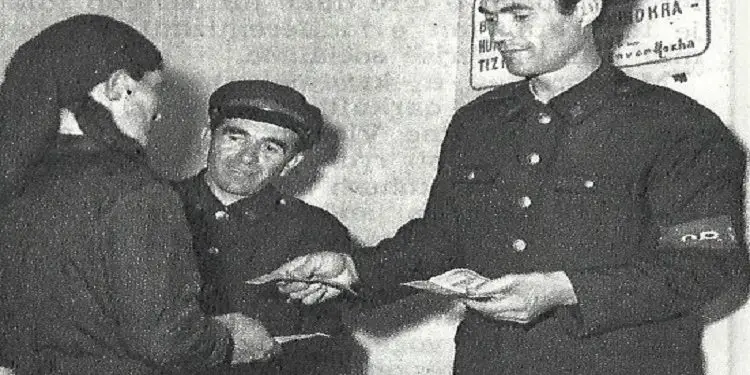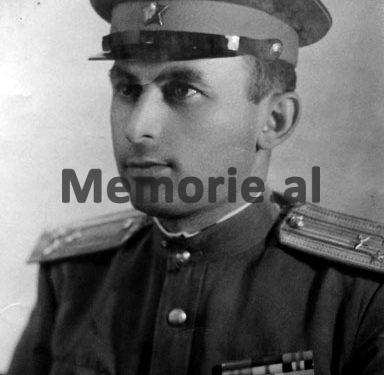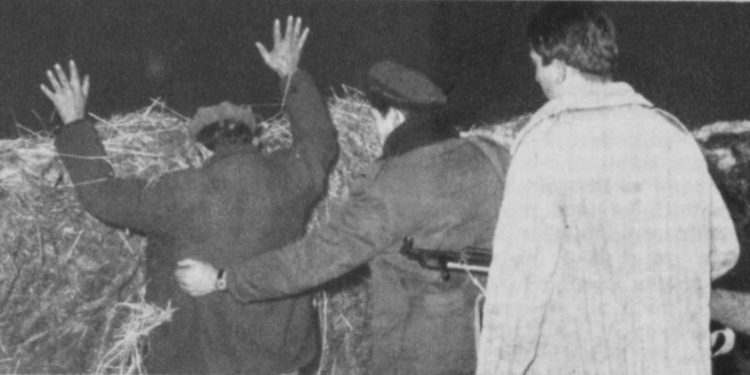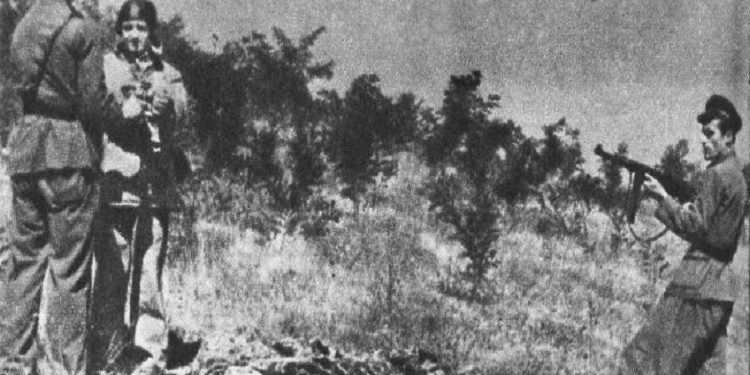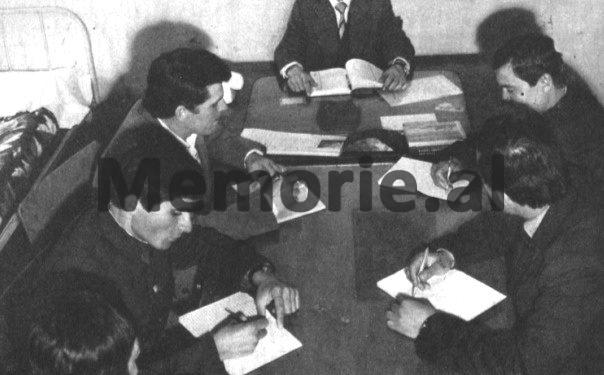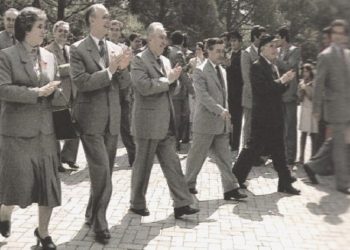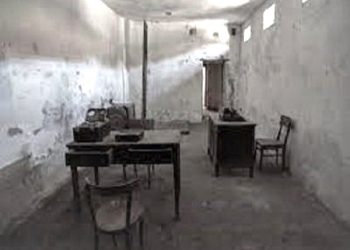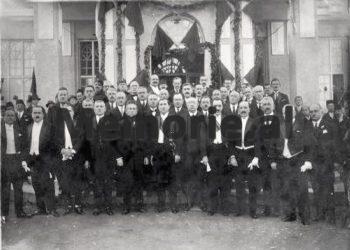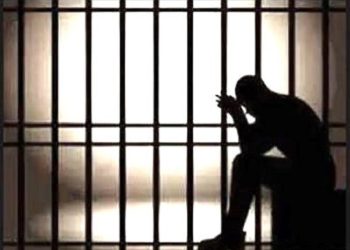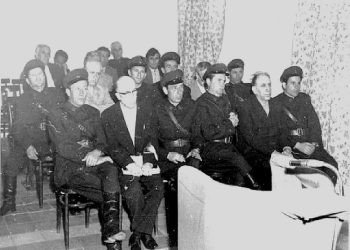The third part
Memorie.al/ publishes a study conducted by AIDSSH (Authority for the Information of Former State Security Documents), entitled; “DISAPPEARED – INSURANCE IN OWN WORDS”, 19 INSURANCE BRANCHES, 3299 LIFE, 1 HISTORY’, in which the ‘History of State Insurance’, which belongs to a period of time from 1943 to 1991, is used. where 19 branches of the State Security are included, from the districts: Durrës, Kolonje, Burrel, Krujë, Lushnje, Dibër, Gramsh, Pogradec, Korçë, Tepelën, Elbasan, Lezhë, Saranda, Gjirokastër, Vlorë, Shkodër, Tropojë, Skrapar, Librazhd and Tirana.
Entry
INSURANCE IN OWN WORDS
“Those who think that communist regimes are the work of criminals only, overlook a fundamental truth: criminal regimes were not formed by criminals, but by convinced enthusiasts…”!
Milan Kundera, “The unbearable lightness of being”
Continues from last issue
Sarande
The history of the State Security for Saranda is a good case study of how the regime connected political opponents with “traitors of the motherland”. The security of Saranda saw a large part of those educated in Greece as part of the Greek agency. In the meantime, a greater weight was given to the clergy, who had been educated or attended seminaries in Greece.
However, he saw those who had worked with Italian companies as agents of the Italian Intelligence. For Sigurimi, the Italian-Greek war of 1940 was, in many ways, a clash of Greek and Italian agencies in the area.
While the shooting of Spiro Zeno, Ahmet Hysi and Fuat Vlati is mentioned, for espionage activities in favor of Italian intelligence, without giving the time of the event, nor the authors of the shooting, the panorama of the enemies of the government is presented, at the time when the Intelligence Service was being established, during The National Liberation War, which was based on mass popular information.
“Serfs and rich people” were seen as connected to the Italian conqueror. Since the creation of the communist cell in February 1942, the collection of information began in Saranda, forcing the communists to enter everywhere. Guerrilla units are described in the Security History as; the first “schools” of the Information Service.
The history of the State Security does not hide that the “forging” of this weapon took place during the years of the National Liberation War. A large number of executions, carried out before the end of the War, are listed in the pages of this history. As such, the history of the Security in Saranda, counts the murder of 37 Italians on February 7, 1943, who were passing as a motorcade, the murder of “80 fascists who were cutting wood in Dhrovjan” and, as an agent of the Italians, the execution of Dervish Shamos.
A year later, noting that they already had experience in eliminating enemies, State Security employees added 2 executions: “Selam Ymeri and Zino Sinani, being collaborators of the Germans, were captured alive, sent to Dhrovjan where they the trial was held and they were sentenced to death”. Admitting that the information they had might not be correct at this time, in October 1944, Telha Kupa and Jorgo Lica were quickly tried and sentenced to death. Even in the years 1955-1960, there are still enemies and in some cases they are among them. The historian mentions that in these years, “out of 120 people in gangs, 50 were party members”.
“Enemies” in numbers
In the territory of the district of Saranda, in the period November 1948 – November 1955, according to the State Security History, “16 armed gangs, with more than 53 bandits, 10 residences and groups with
50 members” operated. For Sigurimi, they worked on foreign intelligence, which aimed to reveal information of a secret nature, recruit agents and create residencies and organizations with elements of the “former exploiting classes”.
However, the enemies of the Security, when seen case by case, some are collaborators, others ordinary people who, when prosecuted, speak out against the regime and admire the freedoms and rights of the West, often in the hope that the communist system would be overthrown.
“The purpose of sending the armed gangs was to hopefully keep the enemy element inside the country, to let him understand that the leaders who escaped abroad are thinking about Albania and that the day would not be far off, that with the help of Anglo-Americans, would land in Albania and popular power would end”.
The legend of suicide in prison
In the evening of December 30, 1958, three former fugitives cross the Greek-Albanian border on the mountain of Strugara. At dawn on January 1, 1959, in the place called “Probilo”, they were captured by the Security forces. All three were accused of being agents of Greek intelligence. For three days, the news of their arrival had come out from the family members. Since M. L. was from the town of Leshnica, he creates opportunities and gets a meeting with his mother, to whom he asks for food.
“The mother, happy that she had met her son, tells this event to her relative, who was an associate of the Security authorities, with the nickname “Technician”, who informs the operational employee through the Leshnica post office.” The operation to arrest them starts on the evening of December 31, 1958. The new year finds the three fugitives in the hands of the Security. But their capture was kept secret, according to Sigurimi, while “through agency and other forms, the suicide of K.F. in prison”. The three prisoners did not provide interesting information to the Albanian authorities, until the “intensive investigation” yielded results.
The fateful meeting with the mother
Vasil Gjika, had escaped from Albania after the installation of the dictatorship. In December 1954, he returns to Mursi together with Vaso Curra, meets Ilia Gjyzel in Memushbey of Pllaka and stays in Bezhan of Mursi, waiting for the right moment to return to Greece. Being only a short distance from the house where he grew up and where his mother still lives, he is torn to get out of the plan. He decides to enter Mursi, to meet his mother. History gives little information about this meeting, but the visit to the mother’s house would be fatal for Gjika.
“The mother did not recognize the boy and considering this as a provocation from the village, she informed her nephew, who together with Foto Cerro, raised the alarm and gave chase. There was no harm from our side”! Vasil Gjika together with Vaso Currë were killed, because the mother did not recognize her son and inadvertently handed him over to Sigurimi.
The pursuit and disappearance of 4 men of the Sejko family!
The persecution and executions of the Sejko family during the communist regime have been shrouded in mystery for a long time. Why were they persecuted?! Why are they still today without a grave, missing Taho Sejko, Teme Sejko sentenced to be shot by the court, Sulo Sejko who committed suicide after pressure, and Sokol Sejko, Teme’s son, shot on the charge of; wanted to blow up the Berat Textile Factory?
Why was it necessary to sacrifice Rear Admiral Teme Sejko, after Khrushchev’s visit to Albania?! In addition to the three Sejko brothers, their brother-in-law, Rexho Plaku, was also in prison, while their sister was interned.
The files disclosed after the 1990s have given some answers that, for the family members, have already increased the doubts. The two brothers, Teme and Taho Sejko, were arrested on July 28, 1960, on the same day, one in Tirana and the other in Shkodër. In court, according to the files, Teme Sejko has accepted all the charges brought against him as an agent of the Greeks!
There are several hypotheses and evidence: for Temen, who was kept in a coffin for 5 days as a torture method, evidence has emerged that he accepted the charges, after Mehmet Shehu asked him to do so, saying that it was “high interest of the homeland” and guaranteed a new life, in a state that he would choose. As for Tahon, the evidence says he never admitted to any charges and wanted to kill himself in his cell.
As for Radio Belgrade, “it was an unprecedented case that the defendants did not defend themselves, but the accusation”. After the shooting of Teme Sejko, the regime arrests his son Sokol as a saboteur, shooting him as well. When Raimondi, Teme’s other son, Shpresa, Teme’s wife, was arrested, she couldn’t take it anymore.
“After a marathon process, they shot him. He was shot, but where? Nobody knows. Even today, it is not known where his bones rest, even for this there are dozens of legends, some of them claim that he is still alive. Sokoli, the younger brother, ran away second. With lead too. First they declared him an enemy, a saboteur, then they secretly executed him. The third was the mother. Successive tragedies crushed her and she ended her life with her own hand”, Rajmondi confessed, with the pledge that she did not accompany anyone to the grave.
Hector, the son of Taho Sejko, vaguely remembers the day of his arrest. He used to ride his bike to the bus park. Then chaos at home, the mother leaving for Tirana to learn the father’s fate, the news that the uncle had been arrested, the Tirana-Shkodër trips to learn the father’s fate and on the other hand, only silence.
His father had been swallowed up by the earth. They did not give them any information. He did not appear in court. Some said that they had killed him, some that he had gone mad, but no official information. After 30 years of hope, where he was told that he might be alive, Hektor Sejko learned only after 1990, that according to the documents, his father was shot on February 19, 1962. Hektor closed his eyes in April 2021, without finding his father, with whom he was separated since childhood.
For part of the alleged “residences” of the Greek Discovery in Saranda, Sigurimi directly blames “the hostile group of Tirana, headed by Teme Sejko, Avdyl Resuli, Taho Sejko and Tahir Demi”. The visits of Sejkovo and others to Konispol are deciphered by the Saranda Security History, as trips that were made to make physical contact with their agents, justifying them as old acquaintances.
According to Sigurimi, in the investigation, in the 1960s, Taho Sejko admitted that in the years 1953-1954 they made an effort to prepare an armed uprising to overthrow the popular power. In the History of Saranda, it is written that; Teme Sejko, who was the main person of the counter-revolutionary organization, “explained to the investigator that the uprising would have the character of an internal war, fratricide that would justify foreign intervention (of the Greeks, Yugoslavs and Americans)”.
As part of the Sejko group, more than 300 people were arrested, from Tirana, Shkodra, Elbasani, Durrës and Saranda. When Kadri Hazbiu was being beaten in 1982, Enver Hoxha left him the burden of guilt for the conspiracy against Sejkova.
“In the second six months of 1960, it became possible for the State Security bodies in Saranda, working with vigilance and insight under the leadership of the basic organization and the life-giving teachings of Comrade Enver, to discover and defeat the phantom plan “. Memorie.al
The next issue follows




